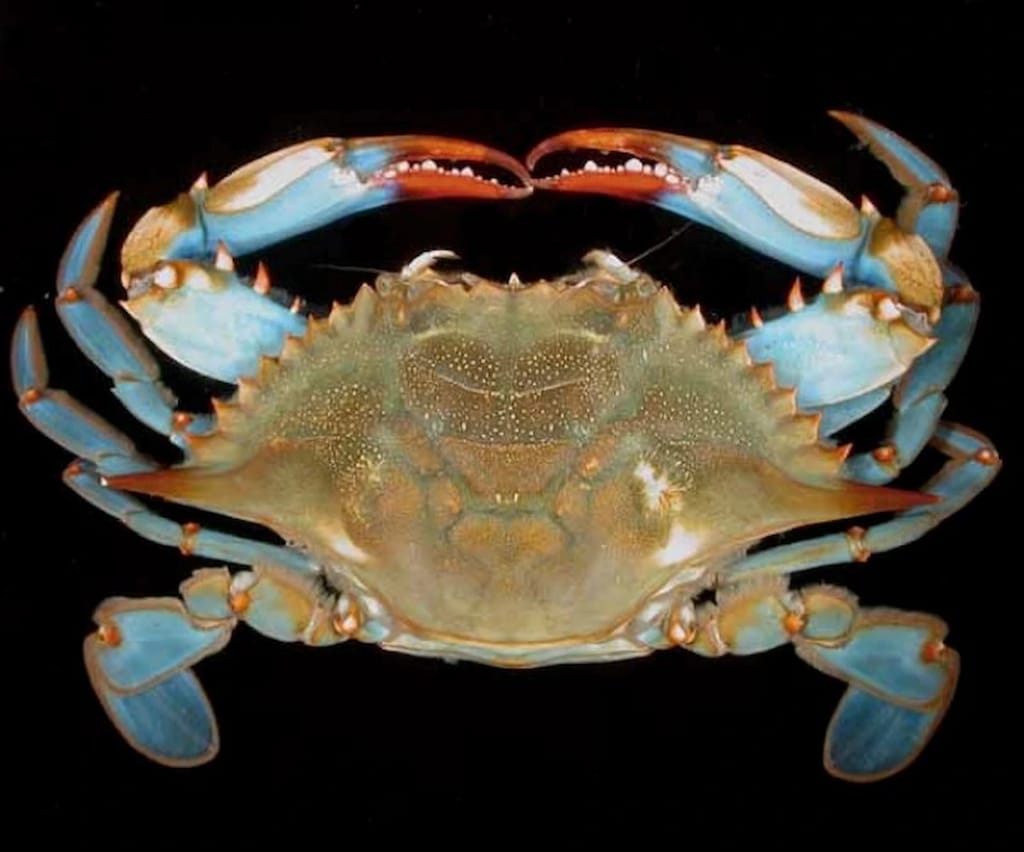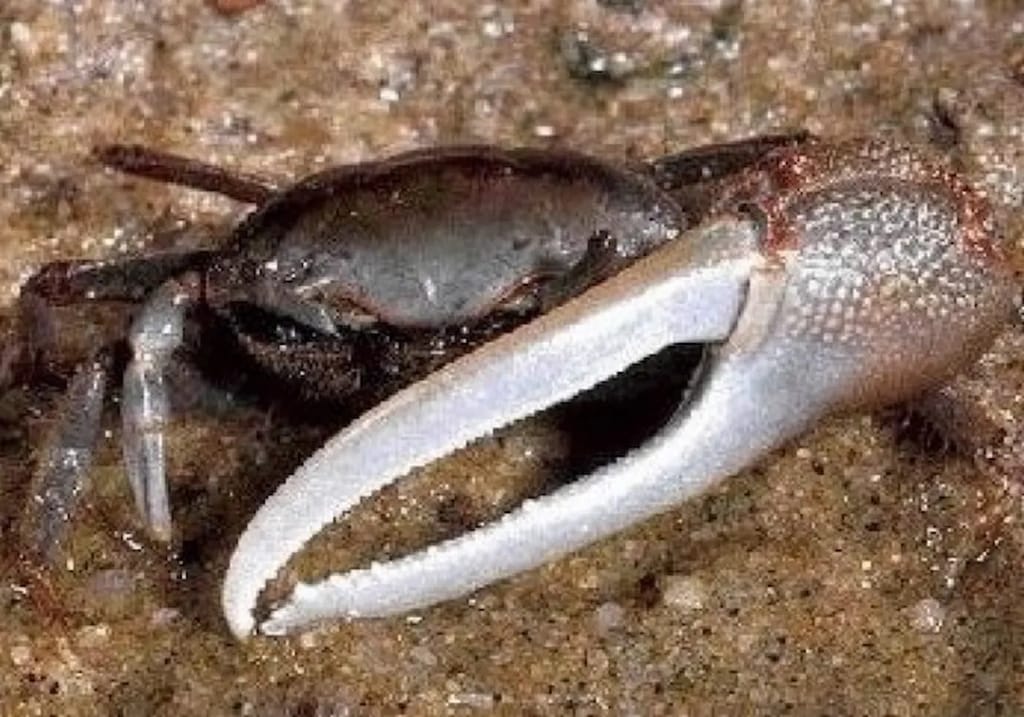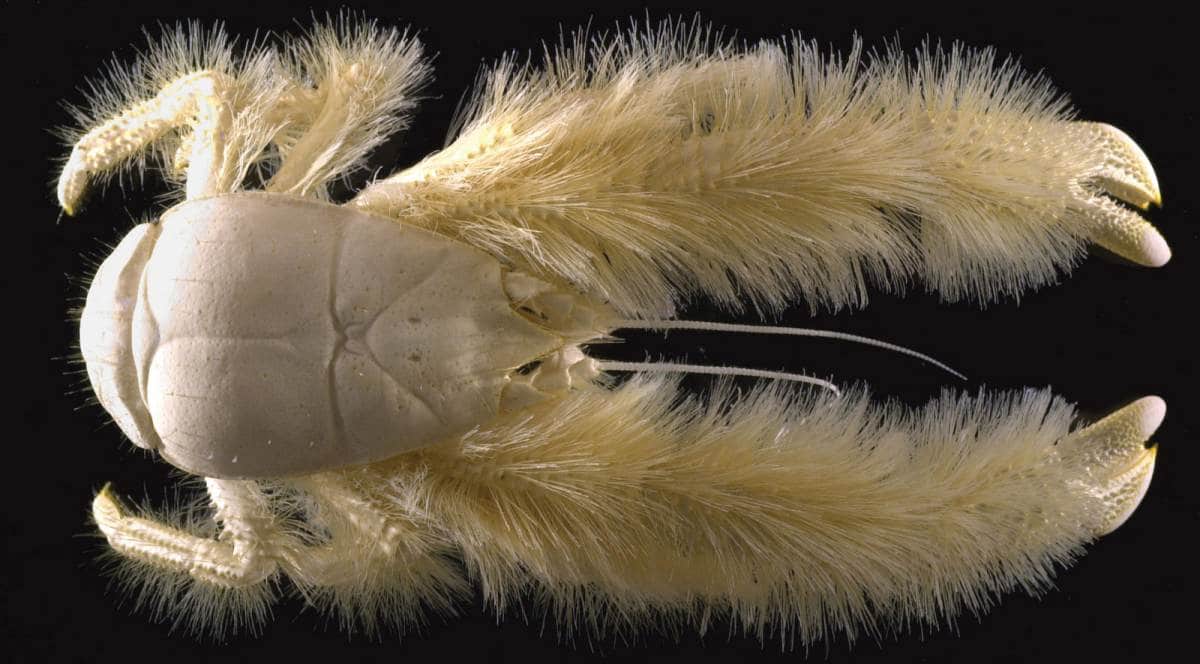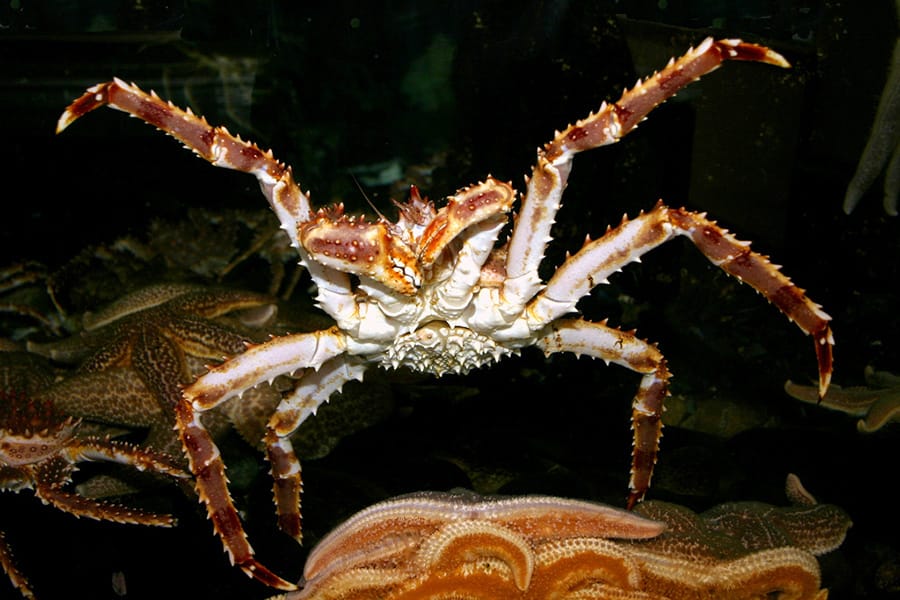Living in the beautiful state of Maryland—I know a thing or two about crabs. I have a crab magnet on my car, crab décor in my home and Old Bay crab seasoning in my cupboard.
See more wonderful ocean animals!
Enter your email and never miss an update
<!– –>
Crabs are crustaceans—living all over the Earth in the ocean, freshwater and on land. They have a thick exoskeleton, a single pair of pincers and an outer shell called a carapace. Crabs are known for their unique walking style. If you ask someone to walk like a crab, they will immediately know what to do. Crabs walk along the sand in a sideways gait or motion. In the water, they swim by using their paddle-shaped legs.
Astonishingly, thousands of species of crab have been identified, but we don’t have enough blog space to cover them all. So, instead … here are five species of crab that you need to meet. Let’s get crabby…

if(typeof window.oc_media_credits === ‘undefined’) {
window.oc_media_credits = {};
}
window.oc_media_credits[68007] = “SERC”;
Blue Crab
Callinectes sapidus
The blue crab’s scientific name, Callinectes sapidus, means “beautiful savory swimmer” in Latin. The shell of a blue crab is greenish on top and white below, is about three inches long and 15 to 18 centimeters wide with bluish legs (where they get their name). Blue crabs are scavengers, feeding on the bodies of dead animals. Blue crabs live up and down the Atlantic Coast and in the Gulf of Mexico and are caught by both commercial and recreational fishermen. Blue crabs live in muddy shores, bays and estuaries—making Maryland and the Chesapeake Bay their perfect home. People love to eat blue crab, and almost fifty percent of the total blue crab catch in the United States comes from the Chesapeake Bay. Blue crab is the most valuable fishery in the Chesapeake Bay and is even the Maryland state crustacean.

if(typeof window.oc_media_credits === ‘undefined’) {
window.oc_media_credits = {};
}
window.oc_media_credits[68008] = “JNBPhotography/Thinkstock”;
Dungeness Crab
Metacarcinus magister
Dungeness crabs live in a wide range of ocean habitats. They make their home as far north as the Aleutian Islands, Alaska, and as far south as Magdalena Bay, Mexico. Dungeness crabs get their name from one of the aquatic locations where they live––a shallow bay inside of Dungeness Spit on the south shore of the Strait of Juan de Fuca (in between Vancouver, Canada, and Seattle, Washington). You can identify Dungeness crabs by their purple-hued shells, which can grow up to 10 inches across. Dungeness crabs have a diet that consists of small clams, worms, shrimp and fish. They will also scavenge dead fish and invertebrates.
Fun fact! Female Dungeness crab can store usable sperm for up to two years, meaning they can reproduce during the mating season without finding a new mate mating in the current season.
Dungeness crabs are a very popular seafood item in the United States and Canada. Dungeness crab support a fishery spanning from California to Alaska—some years the catch can be as much as 54 million pounds of crab from Washington, Oregon, and California! Due to climate change and warming in recent years, the Dungeness crab fleet in California has been forced to change the timing of their fishery due to shifting distributions of resident humpback whales that were becoming entangled in crab fishing gear.

if(typeof window.oc_media_credits === ‘undefined’) {
window.oc_media_credits = {};
}
window.oc_media_credits[68009] = “NOAA”;
Fiddler Crab
There are more than 100 recognized species of fiddler crabs—also known as calling crabs. Fiddler crabs are semiterrestrial marine crabs in the family Ocypodidae. Fiddler crabs have dimorphic claws, which makes it easy to identify if the crab is male or female. The males have one major (bigger) claw and one smaller claw. The females have claws that are the same size. Fiddler crabs get their name because of the mating dance the male uses to attract a female. The male holds one claw, making a fiddle motion with it, somewhat like a violin.
Fiddler crabs live along intertidal areas of lagoons and mudflats. Another habitat for fiddler crabs is on sandy beaches. While some species of fiddler crabs live in saltwater, the majority of them live in brackish water in intercoastal areas.
Fiddler crabs have a wide habitat range—living across the planet. In North America, they live along the eastern seaboard (the western Atlantic), the Gulf of Mexico and the west coast (eastern Pacific). They also live in the Indo-Pacific and off the coasts of Portugal and West Africa.

if(typeof window.oc_media_credits === ‘undefined’) {
window.oc_media_credits = {};
}
window.oc_media_credits[54787] = “Ifremer/A. Fifis”;
Yeti Crab
Kiwa hirsuta
The yeti crab, an unusually hairy crab with no eyes, was discovered in 2005 on a hydrothermal vent near Easter Island. This finding resulted in not only a new species but also a new genus—Kiwa, after the mythological Polynesian goddess of shellfish.
The defining characteristic of the yeti crab is its “furry” claws. Their pincers are covered in blonde setae (bristle/hair-like structures) that enable them to harvest their main source of food: bacteria. They are commonly known as “yeti crabs” due to their resemblance to the infamous abominable snowman.
At just less than six inches long, yeti crabs have stocky and compact bodies to help them adapt to the highly competitive life on the seafloor. The habitable zone in which yeti crabs can survive is dangerously small—too close to the vents and they will instantly fry, too far and they can die of hypothermia. To stay alive, the crabs must pile on top of one another, clinging to each other and the seafloor.
Scientists found the crustaceans performed a sort of dance, waving their claws through the water to provide a constant flow of oxygen, methane and hydrogen sulfide, which helps bacteria grow.

if(typeof window.oc_media_credits === ‘undefined’) {
window.oc_media_credits = {};
}
window.oc_media_credits[23865] = “NOAA”;
Red King Crab
Paralithodes camtschaticus
Red king crabs are known to many of us through the TV show Deadliest Catch, where commercial crabbers battle the elements to haul in big catches and even bigger paydays. Red king crabs are the largest crab to be commercially harvested.
Red king crabs are also known as Alaska king crabs and king crabs. King crabs are a taxon of decapod crustaceans chiefly found in cold seas. They live in the Bering Sea and the Aleutian Islands, along the coast of the Gulf of Alaska, and south to British Columbia, Canada.
Fun fact! When red king crabs grow too big for their shell (exoskeleton), they shed their shell by absorbing water and cracking it, a process called molting.
Red king crabs are one of the largest crabs—growing up to 24 pounds with a leg span of up to five feet. Males grow faster and larger than females.
To stay safe and avoid predators, juvenile red king crabs form pods that travel together for protection. They mound up during the day and feed at night. These pods can consist of tens of thousands of crabs. Sadly, many populations of red king crab in Alaska have experienced dramatic declines in recent years; warming waters and limited forage availability due to climate change are likely factors contributing to king crab declines.
Turning up the heat in the ocean
As the ocean continues to experience the negative effects of climate change, these crabby crustaceans are feeling the heat. Many crabs are vulnerable to ocean acidification—which is occurring because the ocean has absorbed carbon dioxide and become more acidic. These changes threaten crabs and their ability to grow and survive.
Ocean Conservancy is at the forefront of the battle against ocean acidification, working with communities, fishermen, governments, businesses and conservation to tackle the root cause of acidification: carbon emissions. We are also advancing local solutions to reduce runoff and supporting research to protect jobs, coastal economies and the way of life of our coastal and island communities.
Will you donate to Ocean Conservancy to help us implement real solutions to curb carbon emissions and protect our ocean, crabby crustaceans and ourselves from the deadly impacts of ocean acidification?
The post 5 Species of Crab to Meet appeared first on Ocean Conservancy.

